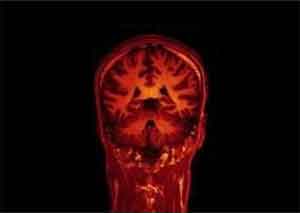- Home
- Editorial
- News
- Practice Guidelines
- Anesthesiology Guidelines
- Cancer Guidelines
- Cardiac Sciences Guidelines
- Critical Care Guidelines
- Dentistry Guidelines
- Dermatology Guidelines
- Diabetes and Endo Guidelines
- Diagnostics Guidelines
- ENT Guidelines
- Featured Practice Guidelines
- Gastroenterology Guidelines
- Geriatrics Guidelines
- Medicine Guidelines
- Nephrology Guidelines
- Neurosciences Guidelines
- Obs and Gynae Guidelines
- Ophthalmology Guidelines
- Orthopaedics Guidelines
- Paediatrics Guidelines
- Psychiatry Guidelines
- Pulmonology Guidelines
- Radiology Guidelines
- Surgery Guidelines
- Urology Guidelines
Chronic epilepsy can be classified & effectively treated by clinical evaluation only

In a cross-sectional study, Dr. Shambhu Kumara and associates have found that Classification of chronic epilepsy into focal and generalized can be done reliably in most patients using clinical information alone without the assistance of investigations like EEG and brain imaging.
Dr.Mamta Bhushan Singh, Professor, Dept of Neurology, All India Institute of Medical Sciences co-researcher in the study said in epilepsy primary care, taking a good history is the key! Most patients can be started on appropriate antiepileptic drugs and made seizure free quite easily and economically. In most patients, expensive investigations may not be needed to start treatment.
Investigations such as EEG and brain imaging are often difficult to obtain in primary care settings of resource-limited regions impacting millions of epilepsy patients. We wanted to test the hypothesis that classification of chronic epilepsy into focal and generalized based on clinical history and examination alone would be comparable to making such a classification with additional inputs from EEG and brain imaging.
Two investigators independently classified consecutive chronic epilepsy patients into focal, generalized and unclassified epilepsy.
Investigator 1 made this determination using clinical history and examination alone whereas Investigator II additionally used EEG and brain imaging too. We calculated interobserver agreement between the two investigators and also looked at the predictors of focal and generalized epilepsy.
Five hundred and twelve patients were recruited. Interobserver agreement between the two investigators in making the focal versus generalized classification was 96.8%, kappa 0.91 (p < 0.0001). When EEG and neuroimaging findings were added to the clinical information, there was a change in classification in 3.2% patients.Several predictors of focal and generalized epilepsy were identified.
The Authors concluded that Classification of chronic epilepsy into focal and generalized can be done reliably in most patients using clinical information alone. Investigating chronic epilepsy patients with EEG and brain imaging may not be necessary for every patient. The results of study are especially significant for epilepsy patients living in resource-limited regions where such investigations may not always be available
Source: Shambhu Kumara, Mamta Bhushan Singh,*, Garima Shuklaa, Sreenivas Vishnubhatlab,M.V. Padma Srivastavaa, Vinay Goyala, Kameshwar Prasada, Victor Pattersonc. DOI: http://dx.doi.org/10.1016/j.seizure.2017.11.002
Dr. Mamta Bhushan Singh
The author is MD, DM, FAAN (Neurology) and is Professor, Dept of Neurology, All India Institute of Medical Sciences. She is a member Editorial Board, Neurology at Specialty Medical Dialogues.

Disclaimer: This site is primarily intended for healthcare professionals. Any content/information on this website does not replace the advice of medical and/or health professionals and should not be construed as medical/diagnostic advice/endorsement or prescription. Use of this site is subject to our terms of use, privacy policy, advertisement policy. © 2020 Minerva Medical Treatment Pvt Ltd